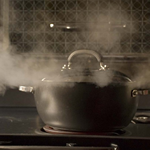
Damp and condensation can lead to serious problems for landlords, damaging properties and potentially affecting the health of tenants.
Damp is also at the root of major disagreements between landlords and tenants at the end of a tenancy when both sides grapple over who is paying to fix the damage.
Who foots the bill for the repairs depends on the type of damage and whether the house had signs of damp when the tenancy started. Either way, the problem takes time and money to sort out and sours relationships with tenants.
Any damp coming in the house from the outside is more than likely a problem for the landlord, while condensation and mould coming from lack of ventilation may fall to the tenant to sort out.
What causes damp in a home?
Damp is caused by a number of factors, including:
- Leaky roofs or pipes
- Ineffective damp proof courses
- Blocked gutters
- Seepage through windows or door frames
- Newly-applied plaster that is drying out
These causes usually leave a tell-tale ‘tide mark’ on affected areas. Heating, ventilation and dehumidifiers can all help to tackle the problem.
But one major cause of damp leaves no mark – condensation. Condensation is perhaps the most common indication of damp in houses both old and new.
Condensation is formed when the temperature outside a house does not match with that inside, typically during cold weather when the heating is on and doors and windows are closed.
Air always carries a certain amount of moisture. When the air temperature drops, moisture and water particles appear on cold surfaces, like windows, north-facing inside walls and bathroom mirrors.
The amount of moisture circulating in a house is startling. Two active people sharing a house will, on average, create 24 pints a day.
Even the most mundane activities produce a lot of moisture:
- Washing clothes – one pint
- Taking a bath/shower – two pints
- Heating with bottled gas or paraffin – three pints
- Cooking and boiling kettles – six pints
- Drying clothes – nine pints
Even two people walking, talking and breathing produce three pints of moisture between them every day.
If the causes of condensation are not tackled, mould starts to grow on the affected areas. This can damage walls and rot through window frames. The mites that feed off mould can increase the chances of some people suffering respiratory problems.
Tackling the condensation and mould
To tackle the problem of condensation, landlords must first tackle the mould.
- Wipe down affected areas with a fungicidal wash – only use products with a Health and Safety Executive approval number
- Wear rubber gloves to protect your skin
- Do not brush or vacuum mouldy areas as this can release spores into the air, greatly increasing the chances of breathing problems for asthma sufferers
- Shampoo carpets and dry-clean mildewed curtains or soft furnishings
- Once the mould has gone, redecorate affected areas. Use fungicidal paint or wallpaper paste containing a fungicide.
Even when an area is mould-free and redecorated, the measure is only a temporary respite unless the condensation causing the problem is tackled.
Immediate steps offer quick and easy solutions. Buy condensation channels and sponge strips from a DIY store. Fitted to windows, they will collect moisture and prevent frames rotting and pools of water collecting on the sills. Be sure to read the instructions carefully as poorly-fitted strips and channels are ineffective and waste money.
Landlords can ask tenants to wipe down windows and sills every morning. Wet cloths must then be wrung out in the bath or sink. They must not be left to dry out on a radiator as this will reintroduce moisture into the house.
Combating condensation long-term takes three stages: Reduce; Ventilate; Insulate.
Cutting condensation
To reduce condensation, tenants need some simple dos and don’ts:
- Cover pans when cooking
- Don’t leave kettles boiling
- Dry washing outdoors whenever possible
- Don’t dry washing on radiators
Landlords can do their bit by replacing any gas bottle or paraffin heaters with alternative heating sources, ensuring that tumble dryers are properly vented and fitting extractor fans in bathrooms and kitchens.
Venting with venom
Proper ventilation does not make a home draughty and more expensive to run. Keeping a window slightly ajar or fitting a trickle ventilator can cut condensation.
When cooking or drying clothes, ask tenants to open windows, but do not forget to stress the importance of security – if tenants are going out, they need to double check that the windows are shut.
In high-condensation rooms like bathrooms and kitchens, fitting a humidistat-controlled electric fan is another way of minimising moisture build-up. These devices work by turning on automatically whenever humidity reaches a certain level. Humidistats are cheap to buy and run.
A good tip for landlords is to leave tenants an information sheet about ventilating the property and including comments on the inventory about damp or condensation damage.
Insulating the home
Keeping house warm can cut condensation. A low, background heat on all day makes a big difference.
To keep costs down, make sure the home is well insulated. Insulating lofts, double glazing windows and draught proofing the house are all effective ways of reducing both condensation and heating costs. Rebates, benefits and help with fuel bills are available in some areas.
Green Deal for Landlords
The Green Deal for Landlords – a government initiative designed to create more energy-efficient homes without the need for major up-front costs also offers cheap solutions to upgrade insulation and energy efficiency.
The Green Deal defers installation costs by adding them to electricity bills in instalments over a number of years.
The Green Deal does operate one ‘golden rule’ however – the cost of any work done must not exceed the projected savings to be made.
Further information is available at http://www.thegreendealhub.co.uk/







